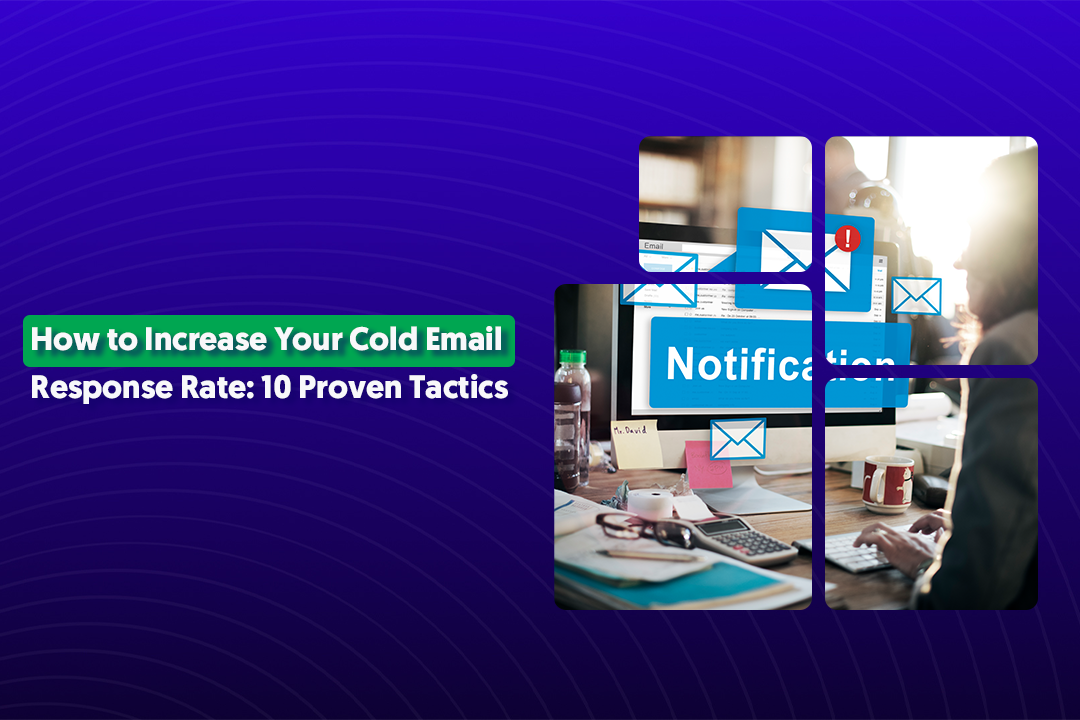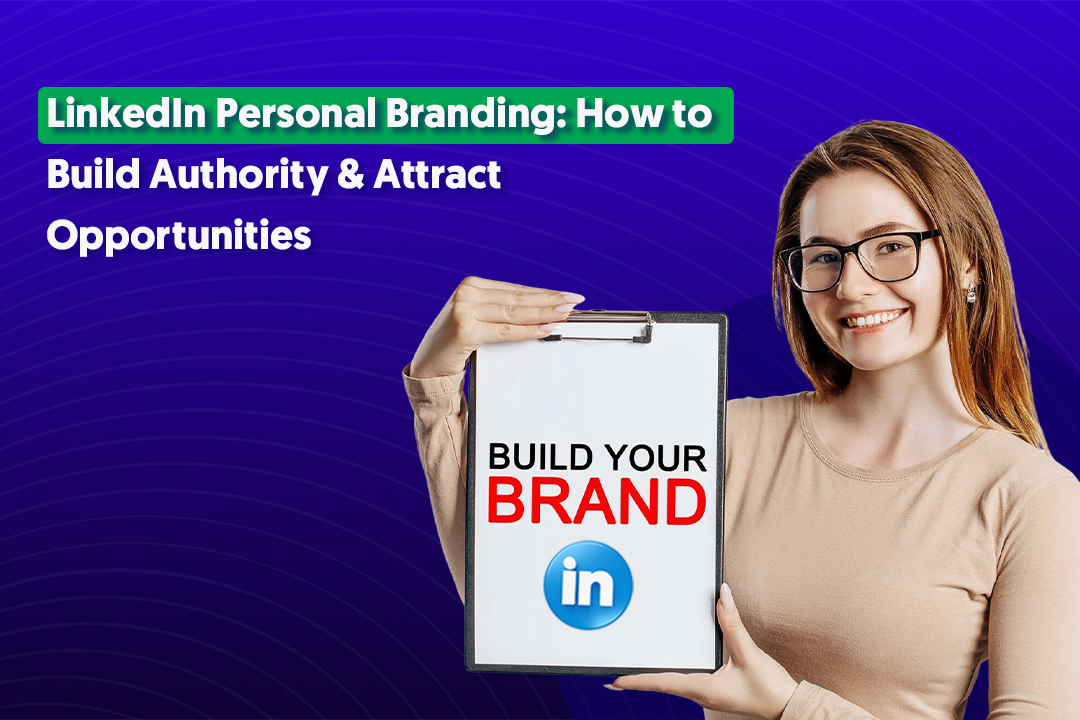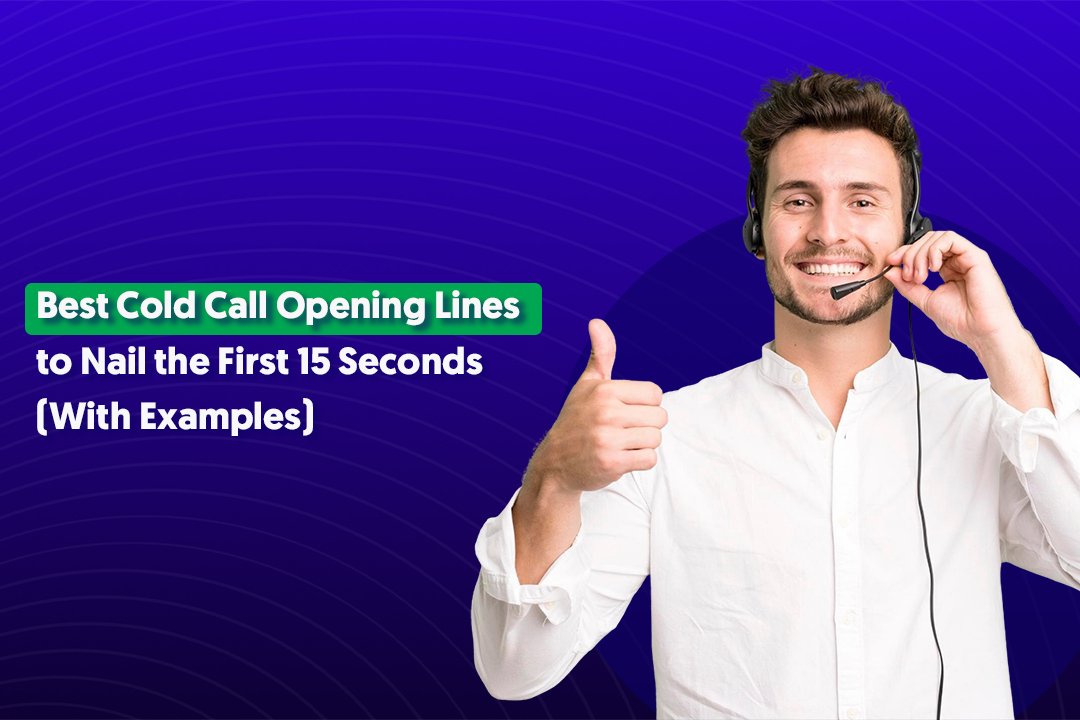Table of Content
Key Takeaways
- A LinkedIn Lead Engine combines profile optimization, consistent content, targeted networking, engagement, and smart DMs to drive predictable B2B leads.
- Organic outreach is often more cost-effective than ads, especially for companies without large marketing budgets.
- Posting native content like carousels and polls can significantly increase LinkedIn organic reach.
- Consistent engagement—10+ valuable comments per day—warms up prospects and pre-frames conversations.
- Avoid cold-pitching in DMs; start by offering value and building rapport first.
- Tracking performance weekly helps refine your strategy and grow your inbound pipeline sustainably.
Imagine generating a steady flow of warm prospects, without spending a dollar on LinkedIn ads.
That’s exactly what a LinkedIn lead engine can do for your business.
But first, what is a LinkedIn lead engine?
A LinkedIn lead engine is a repeatable, scalable system for finding, engaging, and converting your ideal clients organically.
Basically, instead of relying on costly campaigns, you leverage proven LinkedIn lead generation strategies, like targeted profile optimization, value-driven outreach, and smart automation, to attract decision-makers who already want what you offer.
In this guide, you’ll discover step-by-step how to build your own LinkedIn lead engine from scratch.
Let’s dive in!
Why Organic LinkedIn Lead Gen Matters in 2025
In 2025, LinkedIn lead generation isn’t just a trend—it’s the cornerstone of modern B2B growth.
With over 1 billion users and more than 80% of B2B leads coming through LinkedIn, the platform continues to dominate as the go-to channel for buyer research, relationship building, and deal-making.
In fact, 4 out of 5 LinkedIn members drive business decisions, making it the most trusted network for high-value connections.
But here’s the twist: paid ads are losing their edge.
As ad saturation rises across platforms, B2B buyers have become increasingly ad-blind and skeptical of promotional content. Instead, they’re turning to authentic, organic engagement—real conversations, relevant value, and meaningful interactions.
This is why LinkedIn’s organic reach still outperforms most platforms, especially when leveraged strategically.
That’s where the concept of a LinkedIn Lead Engine comes in.
Think of it as a repeatable, scalable system designed to generate LinkedIn leads organically—without relying on ads.
It’s built on optimized profiles, personalized messaging, smart automation, and consistent outreach.
The result?
A pipeline that runs on trust, not clicks.
Who Needs This LinkedIn Lead Engine?
If you’re serious about scaling your business, a systematic engine for B2B LinkedIn lead gen B2B is essential.
But who benefits most from building this kind of engine?
Literally everyone. But, here are the professionals who stand to gain THE MOST:
🎯 Founders & B2B Leaders
You know your product is world-class, but finding the right buyers is another story. Instead of blasting cold emails or investing heavily in ads, you can turn LinkedIn into your #1 sales channel.
Pain Points:
- Limited resources to run paid campaigns
- Reliance on outbound tactics with low response rates
- Struggling to build credibility fast
A LinkedIn lead gen for B2B approach gives founders a cost-effective way to build authority, nurture trust, and scale revenue organically.
🎯 Coaches
You’re an expert at helping others transform, but getting consistent clients can feel like a full-time job. LinkedIn for coaches offers a direct line to decision-makers who are actively searching for solutions, without spending thousands on ads or wasting hours in cold DMs.
Pain Points:
- Low traction from generic content
- Difficulty standing out in crowded markets
- No system to consistently book calls
With a LinkedIn lead engine, you’ll position yourself as the trusted authority and attract warm, inbound interest from prospects who already believe in your expertise.
🎯 Consultants
As a consultant, you thrive on building relationships, but referrals alone can’t fuel predictable growth. LinkedIn for consultants lets you showcase case studies, engage your niche, and spark conversations that convert.
Pain Points:
- No time to build complex marketing funnels
- Inconsistent lead flow month to month
- Rising ad costs draining your margins
When you implement this engine, you replace cold outreach with a pipeline of qualified leads who come to you for help.
The Blueprint: Building the LinkedIn Lead Engine
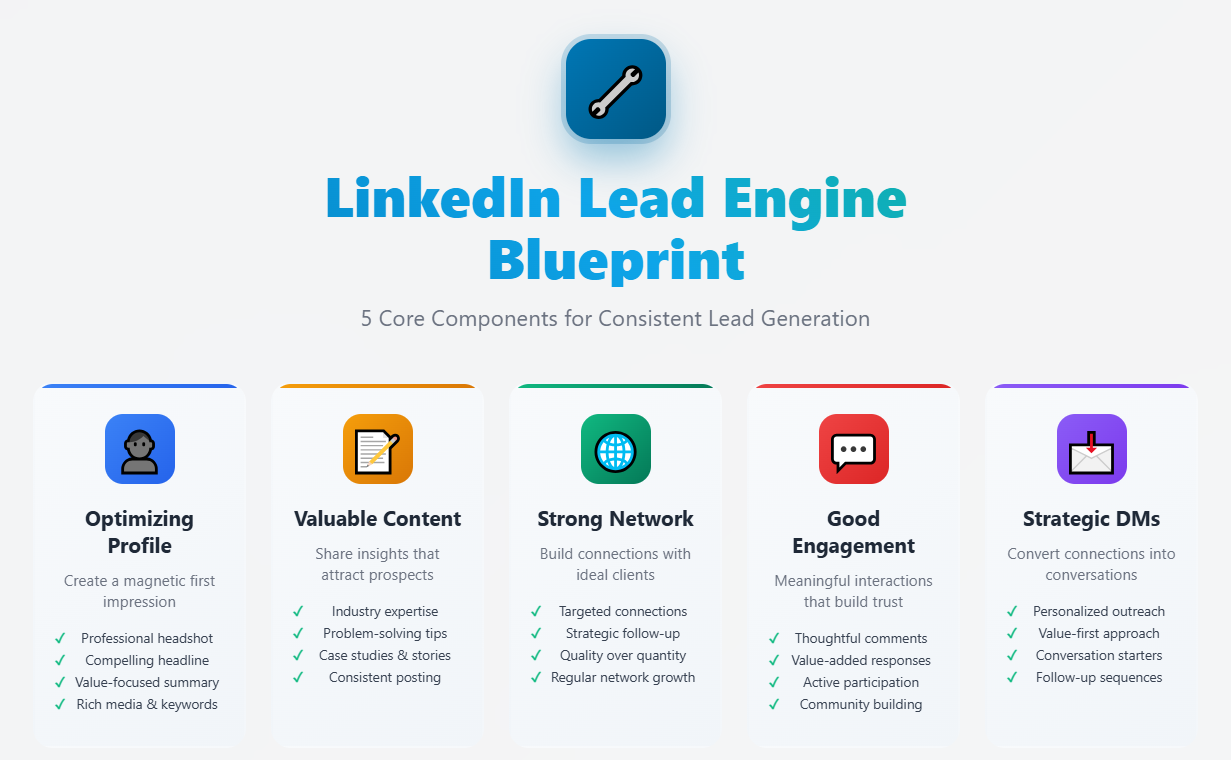
So how do you actually create a LinkedIn lead gen system that works on autopilot?
It starts with understanding that success isn’t random, it’s the result of a clear blueprint you can follow step by step.
Let’s start with the foundation: your LinkedIn profile.
1. Profile = Your Landing Page
Your profile isn’t just an online resume—it’s the first touchpoint in your LinkedIn B2B funnel. When prospects land on your page, they’ll decide in seconds if you’re credible, relevant, and worth connecting with.
Here’s how to master LinkedIn B2B profile optimization so you instantly stand out:
✅ Craft a Magnetic Headline
Use this proven formula: [Niche Audience] + [Benefit/Outcome]
Example: Helping SaaS Founders Drive 5–7 High-Value Demos Weekly Through Organic LinkedIn Lead Gen
✅ Optimize Your ‘About’ Section with Storytelling + CTAs
Tell a concise story about:
- Who you help
- What problem you solve
- Why you’re different
Then add a clear call to action—like “Let’s connect to see how you can replicate these results.”
✅ Leverage the Featured Section Strategically
Showcase high-trust assets:
- Case studies proving your success
- Lead magnets (e.g., free guides, checklists)
- Video testimonials from clients
✅ Upgrade Your Banner Image and Creator Mode
Your banner image should visually communicate what you do and include a simple headline. If you have Creator Mode enabled, pin relevant content that demonstrates thought leadership.
When you treat your profile like a landing page, built to convert, you’ll turn passive visitors into active leads before you even send a connection request.
2. Content = Your Magnet
Once your profile is ready to convert, the next step is to attract and warm up your audience with valuable content.
Think of content as the magnet that draws your ideal prospects into your world and makes them trust you before you ever pitch.
A strong LinkedIn content strategy doesn’t aim to go viral—it’s about consistently showing up with insights that resonate and build credibility over time.
Here’s how to create content that fuels LinkedIn lead gen for B2B:
✅ Post the Right Mix of Content Types
- Thought Leadership: Share your perspective on trends and challenges in your industry.
- Proof & Results: Case studies, screenshots, and client wins that validate your expertise.
- Frameworks & How-Tos: Step-by-step guides or simple processes your audience can use.
- Polls & Engagement Posts: Short, interactive questions that invite conversation.
✅ Aim to Build Trust, Not Just Reach
Big numbers are nice, but trust drives revenue. When you create content that solves real problems, you’ll attract qualified leads who already believe in your approach.
✅ Follow a Consistent Posting Rhythm
A simple 4-post-per-week schedule is often the sweet spot:
- 2 value-driven insights
- 1 proof/result
- 1 engagement or personal story
This balance keeps your feed dynamic and relevant without overwhelming your audience.
✅ Add Soft CTAs
Instead of hard selling, end posts with friendly invitations:
- “DM me for details if you’d like to see how this could work for you.”
- “Comment ‘playbook’ below and I’ll share the guide.”
✅ Use Storytelling to Connect Emotionally
Facts tell, but stories sell. Share real examples of clients overcoming challenges, or moments that shaped your approach. This humanizes your brand and creates deeper engagement.
By combining consistent posting with a clear s focus, your content becomes a magnet—pulling in the right people and priming them for the next step in your lead engine.
3. Network = Your Targeting Engine
A high-converting profile and strong content mean nothing if the right people never see them.
That’s why your LinkedIn network growth strategy is the engine behind the entire lead gen system.
The goal? Build a curated audience of decision-makers who match your Ideal Customer Profile (ICP) and are primed to engage.
Here’s how to turn your network into a powerful LinkedIn lead gen strategy:
✅ Define Your ICP With Precision
Before you send a single request, get ultra-clear on who you’re targeting:
- Industry
- Job Title
- Company Size
- Region
- Pain points and goals
This clarity ensures every new connection is a potential buyer—not just a random follower.

✅ Use LinkedIn’s Search Filters Strategically
Use filters like:
- Title + Industry + Geography
Example: “Marketing Director” + SaaS + United States
Save searches and revisit weekly to keep your outreach consistent.
✅ Engage With Strategic People Before Connecting
Warm up cold prospects by liking or commenting on their posts. This creates familiarity and increases your connection acceptance rate.
✅ Send Personalized, Non-Pitchy Connection Requests
Skip the sales pitch. Focus on shared context or mutual interest. Example:
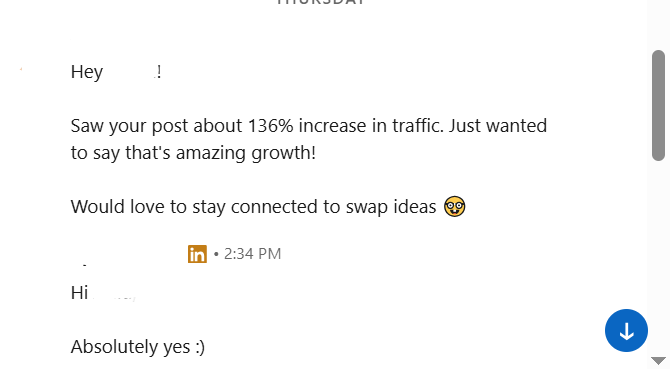
✅ Clean and Segment Weekly
Use tags, folders, or CRM tools to segment your audience into categories like “prospects,” “warm leads,” and “clients.”
Remove irrelevant or unresponsive connections to keep your network targeted and healthy.
When you treat your network like a targeting engine, you ensure your content and messaging reach the right people—boosting your visibility, engagement, and conversion potential.
4. Engagement = The Accelerator
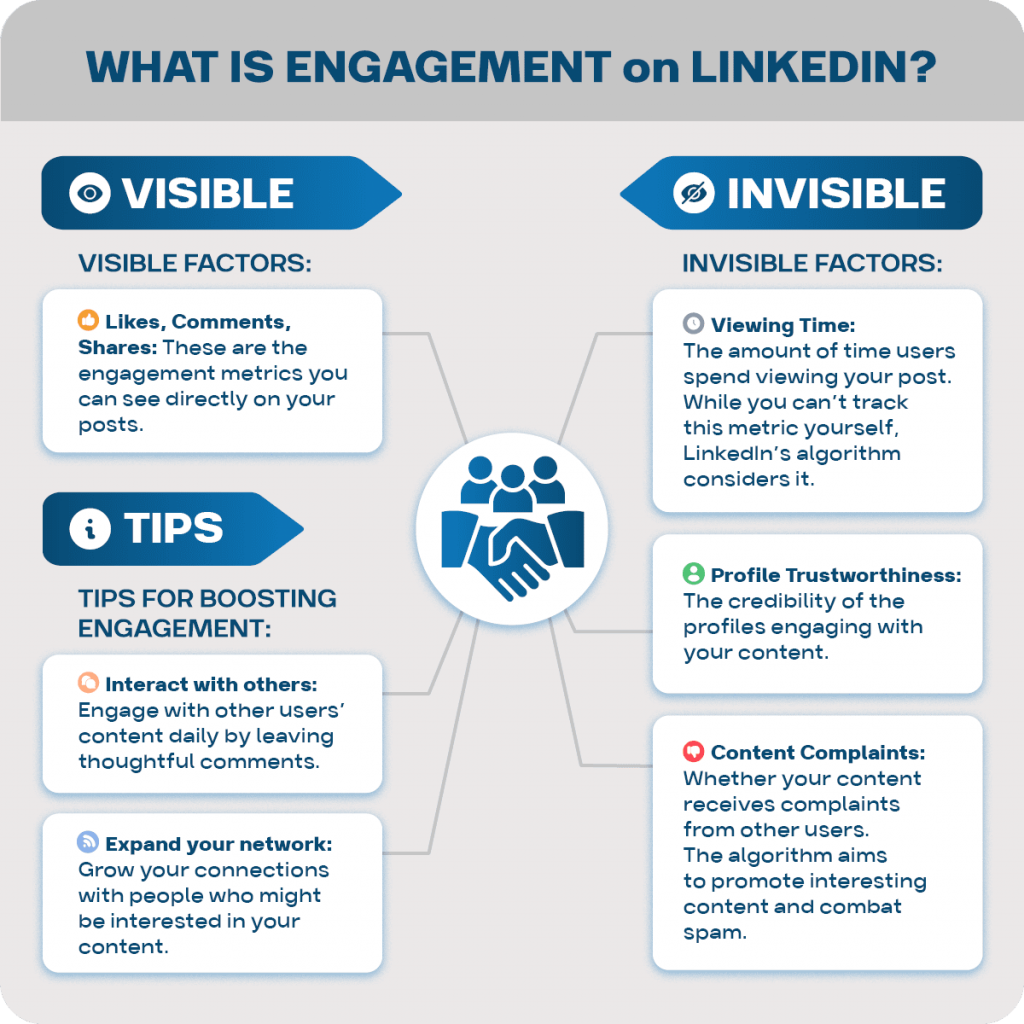
Publishing great content and building the right network lay the groundwork for your lead gen strategy—but it’s consistent LinkedIn engagement that accelerates your results.
Engagement is the signal that tells the LinkedIn algorithm (and your prospects) that you’re an active, credible authority worth paying attention to.
When you master smart engagement, you can dramatically increase your LinkedIn organic reach, generate more profile views, and warm up prospects long before they receive a connection request.
Here’s how to make engagement your secret growth lever:
✅ Treat Commenting as Daily Visibility Practice
Every comment you leave is a micro-piece of content that showcases your expertise to new audiences.
Set a target of at least 10 thoughtful comments per day.
Over a month, that’s 300 opportunities to show up in front of potential clients—without posting a single piece of original content.
✅ Target Influential People in Your Niche
Don’t waste energy commenting randomly.
Focus on posts from industry leaders, prospects, or creators whose audiences overlap with your ICP. Their content gets higher visibility, which means your comments get seen by the right people.
For example, if you help B2B SaaS founders, look for VPs of Marketing, SaaS growth consultants, and SaaS-focused newsletters or creators. Your insights under their posts put you in front of the very people you want to attract.
✅ Make Every Comment Substantive
Forget generic responses like “Great post!” or “Thanks for sharing.” Those add no value and blend in. Instead, use this mini-framework for effective comments:
- Affirm: Acknowledge what you liked or agreed with.
- Add: Share an insight, statistic, or personal experience.
- Invite: Ask a follow-up question or open the door for further discussion.
Example:
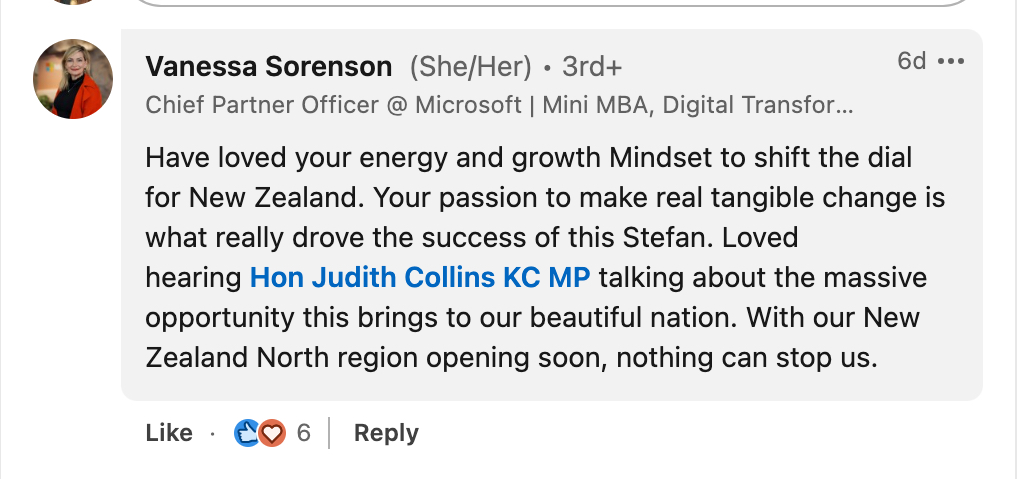
These comments not only demonstrate your expertise but also create micro-conversations that naturally lead to connection requests and DMs.
✅ Reply to Every Comment on Your Posts
Engagement isn’t just about outbound activity. When people comment on your posts, it’s a sign of interest. Reply to every comment thoughtfully.
This shows approachability, boosts your content’s reach in the algorithm, and often sparks private conversations that lead to warm leads.
Building a consistent engagement habit transforms your LinkedIn presence from passive to proactive—and helps your LinkedIn lead engine run faster and more effectively.
5. DMs = The Conversion Lane
All the content, networking, and engagement you do on LinkedIn ultimately drive to one place: private conversations.
Direct messages are where relationships deepen and opportunities convert. But here’s where most people get it wrong: they rush the pitch.
A smart LinkedIn message strategy treats DMs as a natural continuation of your public engagement—not a cold sales script. When done right, your messages feel like a helpful dialogue, not a pushy pitch.
Here’s how to turn DMs into your most effective LinkedIn lead conversion tool:
✅ Use DMs as a Natural Extension of Engagement
The most effective messages don’t come out of the blue. They start with something shared: a comment thread, mutual connection, or piece of content. When you reach out after engaging publicly, you’re not a stranger—you’re someone already familiar.
Example opener:
"Really appreciated your perspective on [topic]. It’s refreshing to see others who value [shared value]. Curious, how are you approaching [specific challenge] these days?"
✅ Never Pitch in the First Message—Spark Curiosity Instead
Your goal is to start a conversation, not close a deal in one step. Focus on uncovering needs and building rapport.
When you spark curiosity, prospects are more likely to lean in and ask about what you do.
✅ Use a Simple, Repeatable Sequence: React → Ask → Share → Invite
Here’s a proven approach you can adapt:
- React: Reference something specific they posted or shared.
“Saw your post on scaling B2B sales teams—great insights.” - Ask: Pose a thoughtful question about their experience or challenges.
“Out of curiosity, what’s been your biggest challenge with inbound lead flow lately?” - Share: Offer a quick, no-strings-attached resource or tip.
“If it helps, I have a short checklist on optimizing LinkedIn profiles to convert visitors. Happy to share.” - Invite: Gently open the door to a deeper chat.
“If you’d like, we can connect to explore ideas further.”
✅ Offer Value Before You Ask for Anything
Giving value upfront builds trust and positions you as a helpful authority. Your “value pieces” could be:
- A checklist or mini guide
- A personalized piece of feedback on their profile
- A relevant case study or example
This shows you’re invested in helping, not just selling.
✅ Track Engagement and Follow Up Thoughtfully
Keep a simple spreadsheet or CRM record of who engages, who downloads resources, and who replies.
Follow up politely if they expressed interest but went quiet. Timing matters—often, the second or third touchpoint is where deals happen.
You can also send their name as a second followup, like: Sarah?
When you treat DMs as a conversation lane, not a cold calling channel, you’ll see higher response rates, warmer leads, and a natural path from interest to conversion.
Test Drive: A Week of Testing LinkedIn Lead Engine
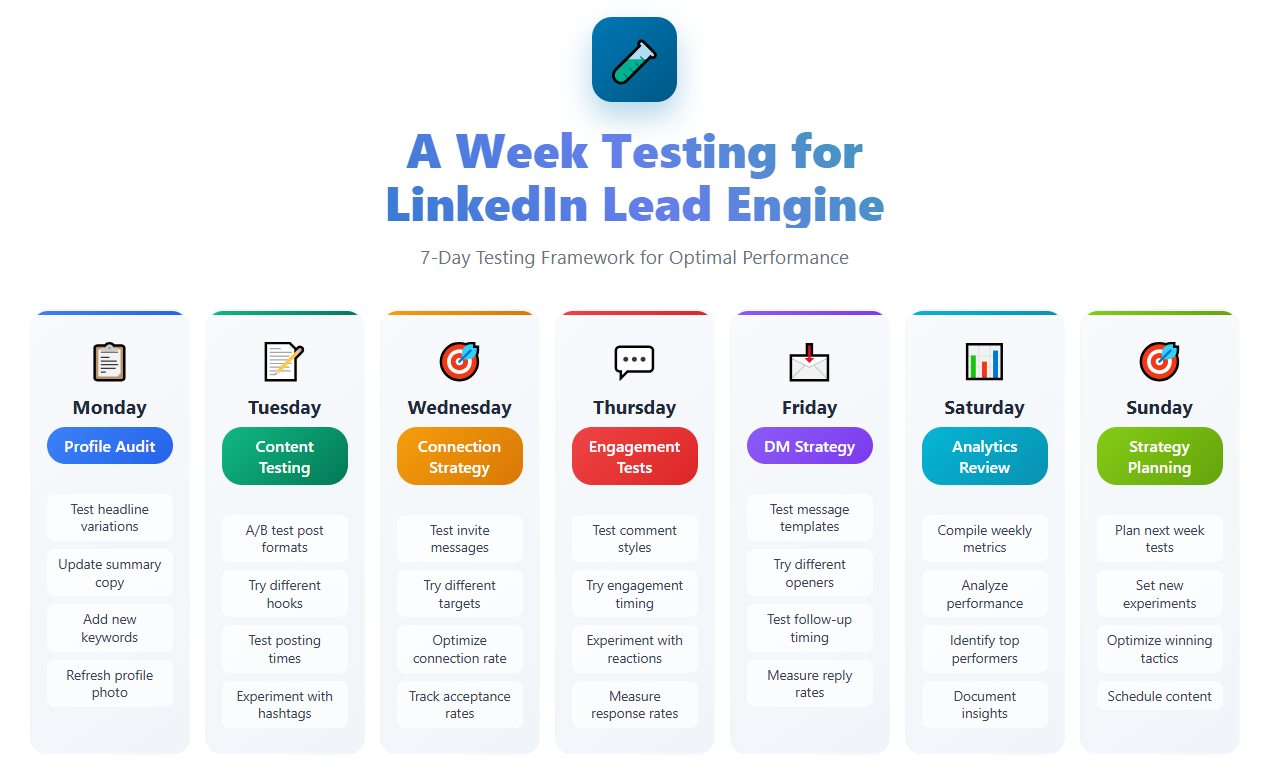
Building a LinkedIn lead engine doesn’t happen overnight. But you can start experiencing results in just one week if you focus on small, consistent actions.
This 5-day plan is designed to help beginners put the system into motion without feeling overwhelmed.
Below is your day-by-day blueprint:
Day 1: Optimize Your Profile
- Refresh your headline using the formula: [Niche Audience] + [Benefit/Outcome]
- Update your banner image and Featured section to highlight credibility.
- Write a clear “About” section with a simple CTA.
Tip: Treat this as your digital storefront. A polished profile can double your acceptance and reply rates.
Day 2: Publish Value-Driven Content
- Share one post that solves a real problem for your audience.
- Content ideas: A short framework, an industry insight, or a client win.
- End with a soft CTA like “Comment ‘guide’ if you’d like the checklist.”
Keywords to include in your copy: b2b lead generation LinkedIn and LinkedIn weekly strategy for better search visibility.
Day 3: Grow Your Network Strategically
- Use LinkedIn’s advanced search to find 20–30 profiles matching your ICP.
- Engage with 3–5 of their recent posts by commenting thoughtfully.
- Send personalized connection requests referencing your engagement.
Day 4: Start Conversations in DMs
- Choose 5–10 new connections from Day 3.
- Send a friendly DM offering a small piece of value—a resource, tip, or relevant question.
- No pitching—just focus on opening a dialogue.
Example:
"I put together a short guide on optimizing LinkedIn profiles for inbound leads. Happy to share if you’re interested."
Day 5: Engage Broadly and Track Progress
- Leave 10 insightful comments on posts from industry influencers or target prospects.
- Reply to every comment you receive on your content.
- Review your week’s activity and track:
- Connection acceptance rates
- Replies and engagement
- Profile views and new followers
- Connection acceptance rates
Optional Tracking Tip: Create a simple spreadsheet or use a CRM to monitor your weekly actions. Tracking helps you stay consistent and see which activities produce results fastest.
Make It Easier With Cleverly’s Automation Tool

If you’re serious about scaling beyond manual efforts, Cleverly’s LinkedIn automation platform can multiply your results while saving hours every week.
With Cleverly, you can:
- Send up to 500 invites/month automatically to hyper-targeted prospects.
- Use multichannel outreach, combining LinkedIn and email in one campaign.
- Access advanced reporting and real-time AI-driven lead management, so you always know which prospects are warm.
- Import and export CSVs for highly personalized targeting.
- Engage Groups & Events—up to 1,000 per month—to expand your visibility faster.
- Integrate seamlessly with your CRM via Zapier and native integrations.
When you partner with Cleverly, you don’t just get done-for-you LinkedIn lead generation campaigns—you also gain access to our powerful automation platform. You’ll be able to:
- Monitor campaigns in real time
- Manage conversations with an AI-powered inbox
- Track performance down to each connection and reply
So if you’d rather avoid risking tens of thousands on paid ads and prefer a proven, predictable system to fill your pipeline with qualified leads, Cleverly’s LinkedIn lead generation service is built for you.
LinkedIn Lead Engine Pit Stops: What to Avoid
Even the best strategy can stall if you fall into common traps that kill momentum. To help you keep your LinkedIn lead engine running smoothly, here are three of the biggest LinkedIn lead gen mistakes—and how to fix them.
Avoid these pitfalls to protect your LinkedIn organic reach and maintain trust with your audience:
❌ Mistake 1: Posting External Links
One of the fastest ways to see your LinkedIn organic reach drop is to post links that send users off-platform.
LinkedIn wants people to stay engaged within their ecosystem, so posts containing outbound links often get suppressed in the feed.
Fix:
- Post your content natively—upload PDFs, write articles, or share insights directly in the post.
- If you must share a link, place it in the first comment rather than in the main post text.
- Use clear CTAs like “Link in the comments below.”
❌ Mistake 2: Cold-Pitching in DMs
Few things damage your credibility faster than connecting with someone and immediately launching into a sales pitch. It feels transactional and spammy—and it’s a surefire way to be ignored (or reported).
Fix:
- Treat DMs as conversations, not cold calls.
- Start by referencing something specific—like a post you both engaged with or a challenge they mentioned publicly.
- Build rapport and offer value first (e.g., a relevant checklist or insight) before suggesting a deeper discussion.
❌ Mistake 3: Ignoring Analytics and Audience Feedback
Many B2B professionals assume that posting alone will generate leads, but without reviewing performance data, you’re flying blind. If you’re not measuring what’s resonating, you’ll miss chances to improve.
Fix:
- Check your LinkedIn analytics weekly:
- Which posts earned the most engagement and views?
- What topics or formats attracted your ideal prospects?
- Which CTAs drove replies and comments?
- Which posts earned the most engagement and views?
- Use this feedback to refine your content calendar and messaging.
- Track trends over time to spot opportunities to double down on what works.
Avoiding these common mistakes is critical to building a sustainable, high-trust LinkedIn lead generation strategy that compounds over time. When you commit to value-driven outreach and consistent refinement, your lead engine only gets stronger.
The Fuel: Organic Reach Tactics That Actually Work
Once your profile, content, and outreach are in place, you need one more ingredient to keep your LinkedIn lead engine humming: Reach.
The more people who see your content, the faster you’ll attract warm prospects and build credibility.
Here are proven tactics to help you increase organic reach on LinkedIn without relying on ads or spammy hacks:
✅ Post When Your Audience Is Online
Timing can make or break your reach. If you’re sharing content when your target audience isn’t active, your post can disappear before anyone sees it.
How to find the best times:
- Check your LinkedIn analytics to see when impressions spike.
- Experiment with posting Tuesday–Thursday mornings (often the highest engagement windows).
- Test a few different time slots, then double down on what works best for your audience.
✅ Use Powerful Hooks
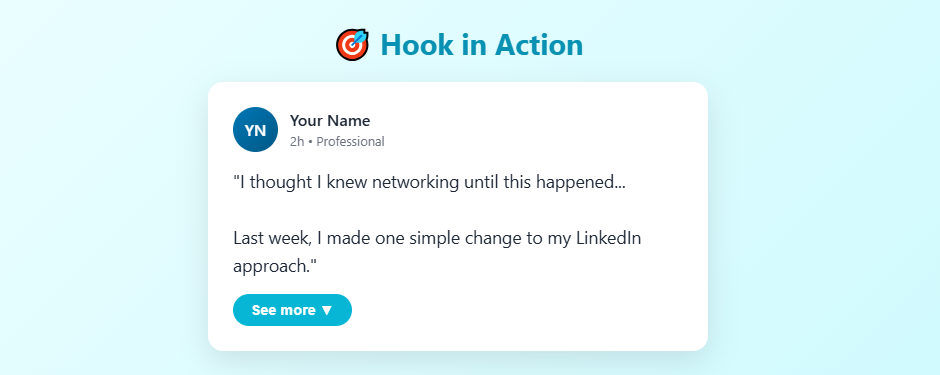
The first 1–2 lines of your post are critical. They’re what stops someone scrolling and gets them to click “...see more.”
Effective hooks often include:
- Questions: “Is anyone else seeing this trend in B2B sales?”
- Surprising stats: “Only 2% of LinkedIn users post content consistently.”
- Contrarian opinions: “Cold emails aren’t dead. You’re just doing them wrong.”
When you lead with curiosity, you instantly boost your LinkedIn organic growth strategy.
✅ Leverage Carousels for More Impressions
Carousels—native PDFs uploaded directly to LinkedIn—are one of the most underused content formats. They tend to get higher engagement because they encourage people to swipe through multiple slides, signaling strong interest to the algorithm.
Ideas for carousels:
- Step-by-step frameworks
- Case studies with visuals
- Mini guides or checklists
✅ Mix Long-Form and Short-Form Posts
Variety keeps your content fresh and appeals to different segments of your audience.
- Long-form posts (1,000+ characters): Great for storytelling, deep dives, and authority building.
- Short-form posts (1–3 sentences): Perfect for punchy insights, questions, or quick tips.
A balanced mix helps you reach more people while keeping engagement high.
✅ Encourage Engagement with Clear CTAs
The algorithm favors posts with strong interaction—likes, comments, and shares all expand your reach.
End every post with an invitation to engage. Examples:
- “What’s your take on this?”
- “Drop a comment if you’d like the checklist.”
- “Have you tried this? Share your experience below.”
When your audience knows exactly what to do next, they’re more likely to participate—fueling even more organic visibility.
If you apply these tactics consistently, you’ll see your reach and authority grow week over week—helping your LinkedIn lead engine drive more conversations and qualified leads without paid ads.
Final Word: Turn Your LinkedIn Into a Revenue Engine
If there’s one takeaway from this guide, it’s that organic LinkedIn lead gen is not only possible—it can outperform ads when you build it strategically.
While paid campaigns can work for companies with massive budgets and time to test, most B2B brands don’t have $30,000 a month to risk on unpredictable clicks.
Instead, an organic LinkedIn Lead Engine gives you a repeatable system to generate B2B inbound leads without the guesswork or high costs.
If you’d like help putting this system in place, get in touch with our LinkedIn experts to help you.

At Cleverly, We've helped 10,000+ clients generate leads with companies like:
- Amazon
- UBER
- PayPal
- Slack
- Spotify & more
That resulted in $312 Million in Pipeline Revenue, $51.2 Million in Closed Revenue through Linkedin Outreach. 💸
Interested in generating qualified B2B Leads through Linkedin? Let’s talk!
LinkedIn Lead Engine: FAQs
1. How to increase organic reach on LinkedIn?
To increase LinkedIn organic reach, post consistently—aim for 3–5 times per week. Engage with others before and after your post goes live to boost visibility. Use native content formats like carousels and polls, and make sure your headline is optimized with searchable keywords relevant to your audience.
2. What is organic reach on LinkedIn?
Organic reach on LinkedIn means the total number of people who see your content without any paid promotion. It comes from unpaid exposure through your network, followers, hashtags, and engagement. The more people interact—liking, commenting, or sharing—the further your post spreads organically.
3. How to calculate organic reach rate of a LinkedIn page?
To calculate your organic reach rate, use this formula:
(Organic Impressions ÷ Followers) x 100
For example, if your post received 2,500 organic impressions and your page has 10,000 followers:
(2,500 ÷ 10,000) x 100 = 25% reach rate
You can find these numbers in your LinkedIn analytics dashboard under Admin Tools.
Bonus tip: Track reach rates over time to identify which days and formats perform best so you can adjust your content calendar.



